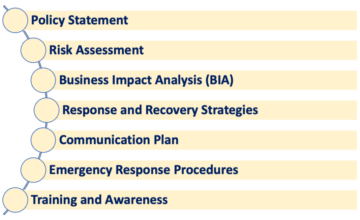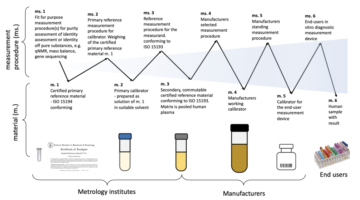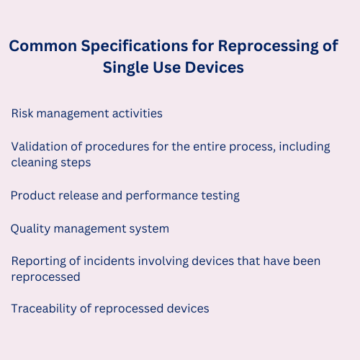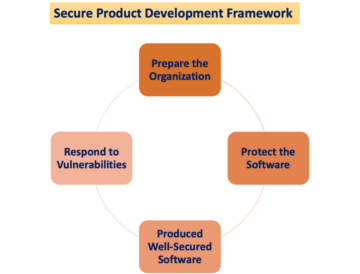Having a Strategy for Regulatory Compliance is a new requirements clearly mentioned in the European Medical Device Regulation (EU MDR 2017/745) and EU IVDR 2017/746 (European In Vitro Diagnostic Regulation).
In fact, in the Article 10 of the EU MDR 2017/745 and EU IVDR 2017/746 it is reported, in the Paragraph 9, the specific requirements associated to a Quality Management System needed to obtain the CE marking process. Among these requirements, it is included:
“a strategy for regulatory compliance, including compliance with conformity assessment procedures and procedures for management of modifications to the devices covered by the system”.
Deep Dive on Strategy for Regulatory Compliance
The Strategy for Regulatory Compliance is linked to the conformity assessment (which we have already been discussing through QualityMedDev website). In fact, in the Annex IX related to conformity assessment, elements that may be included in the Strategy for Regulatory Compliance are mentioned. Specifically, these elements are:
- identifying the legal requirements that are applicable
- qualifying devices against the applicable regulatory requirements
- handling equivalence to existing devices and
- choosing the conformity assessment procedures to be used and complying with them.
All these requirements are specifically reported in the section 2, Chapter 1 of Annex IX named “Conformity Assessment based on a Quality Management System and on Assessment of Technical Documentation”

Applicable Legal Requirements & Strategy for Regulatory Compliance
Identification of the applicable legal requirements should already be part of the design process. However, according to the EU MDR and IVDR requirements, this should also be part of the documented Strategy for Regulatory Compliance.
Typically, having a specific list of the applicable legal requirements may suffice to cover this requirements. Keep in mind that legal requirements include topics which are not directly linked to medical device design process, for example GDPR requirements, REACH and ROHS regulation, etc etc.
Moreover, it is necessary to have a clear process for the identification of any legal or regulatory applicable requirements, including the management of updates related to these requirements. Typically, the update of legal requirements may be handled through a change control process, where the evaluation of the impact of the updated regulation is evaluated.
Qualification of the device against the Applicable Requirements
For any applicable regulatory or legal requirements identified based on the previous section, it is necessary to have a clear image of how these requirements are covered, either through specific process of the Quality System or through specific verification and validation activities.
Management of the Equivalence with Other Devices
The EU MDR 2017/745 provides the possibility, for a manufacturer, to follow the so-called equivalence pathway, where the technical documentation, post-market surveillance (PMS), post-market clinical follow-up (PMCF) and the scientific literature related to an already marketed device is used to demonstrate the quality, safety and efficacy of a medical device that has no CE marking yet. The management of the equivalence with other device shall also be included in the Strategy for Regulatory Compliance requested by the EU MDR and IVDR.
The concept of equivalence is very well described in a MDCG (Medical Device Coordination Group) guideline (MDCG 20202-05). Usually, three different aspects shall be evaluated in order to determine the equivalence with a specific device already on the market:
- Technical characteristics, for which it is clearly mentioned:
The device is of similar design; is used under similar conditions of use; has similar specifications and properties including physicochemical properties such as intensity of energy, tensile strength, viscosity, surface characteristics, wavelength and software algorithms; uses similar deployment methods, where relevant; has similar principles of operation and critical performance requirements (Ref. MDR, Annex XIV Part A (3) ).
- Biological characteristics:
The device uses the same materials or substances in contact with the same human tissues or body fluids for a similar kind and duration of contact and similar release characteristics of substances, including degradation products and leachables (MDR, Annex XIV Part A (3) ).
- Clinical characteristics:
The device is used for the same clinical condition or purpose, including similar severity and stage of disease, at the same site in the body, in a similar population, including as regards age, anatomy and physiology; has the same kind of user; has similar relevant critical performance in view of the expected clinical effect for a specific intended purpose.
The strategy that it is used to determine the equivalence shall be clearly mentioned in the Strategy for Regulatory Compliance.
Selection of the Conformity Assessment Procedure
Lastly, the Strategy for Regulatory Compliance shall shall include the selection of the conformity assessment procedure to be followed.
We have already been discussing about the conformity assessment and the different routes it is possible to follow, based on the class of risk of the device and the type of assessment is willing to be followed.
Strategy for Regulatory Compliance SOP Template
QualityMeddev recently published a Strategy for Regulatory Compliance SOP fully aligned with the requirements of the EU MDR 2017/74 and IVDR 2017/746.
The strategy for regulatory compliance is then linked with some other key documentation of the quality system, such as clinical evaluation, post-market surveillance, design control and, last but least, the conformity assessment routes that the organisation wants to follow in order to obtain the CE marking.
The Strategy for Regulatory Compliance SOP Template is a 14 pages document, fully editable in word, and compliant with the requirements of the EU MDR and IVDR. The documents is already organised with the appropriate section and, for each of this section, specific instructions on what needs to be included is provided.
Conclusions
In this article, we have been discussing the requirement associated to the Strategy for Regulatory Compliance, that is a requirements associated to the European Medical Device Applications (EU MDR 2017/745) and EU IVDR 2017/746 (European In Vitro Diagnostic Regulation).
QualityMedDev Newsletter
QualityMedDev is an online platform focused on Quality & Regulatory topics for medical device business.
Thanks to QualityMedDev newsletter, you will stay updated with the most recent articles published on the website, along with news from the regulatory world, particularly in the context of the new EU MDR and IVDR.
Do not forget to have a look at our services, specifically focused in two main topics:
- The construction of a brand new quality system
- Activities of software validation / computer system validation, either for software embedded to a medical device or for software used within the quality system.
- Trainings over a broad range of quality and regulatory topics.
If you have any topic for which you would like to have more information or you need template or documentation that is currently not available in our QualityMedDev Shop, do not hesitate to contact us and we will do our best to fulfil your request.
Source: https://www.qualitymeddev.com/2021/08/04/strategy-for-regulatory-compliance/
- &
- 9
- activities
- algorithms
- among
- anatomy
- applications
- article
- articles
- BEST
- body
- business
- change
- compliance
- construction
- Design
- Devices
- Disease
- documents
- energy
- etc
- EU
- European
- follow
- GDPR
- Group
- How
- HTTPS
- Identification
- image
- Impact
- Including
- information
- IT
- Key
- Legal
- List
- literature
- management
- Manufacturer
- Market
- materials
- medical
- medical device
- Navigation
- news
- Newsletter
- online
- order
- Other
- performance
- platform
- plugin
- population
- Posts
- Products
- quality
- range
- Regulation
- Regulatory Compliance
- Requirements
- Risk
- Safety
- Software
- Stage
- stay
- Strategy
- Surface
- surveillance
- system
- Technical
- tissues
- Topics
- Update
- Updates
- us
- Verification
- View
- W3
- Website
- within
- WordPress
- world








